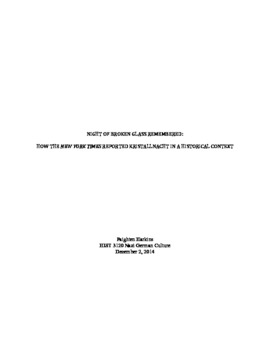| dc.contributor.author | Harkins, Paighten | en_US |
| dc.contributor.editor | Capps, Sarah | en_US |
| dc.contributor.editor | Collins, Adriana | en_US |
| dc.contributor.editor | Dixon, Arthur | en_US |
| dc.contributor.editor | McCullough, Morgan | en_US |
| dc.contributor.editor | Miles, Sarah | en_US |
| dc.contributor.editor | Robertson, Terrence | en_US |
| dc.contributor.editor | Rodríguez, Monique | en_US |
| dc.contributor.editor | Romines, Richard | en_US |
| dc.contributor.editor | Scheller, Austin | en_US |
| dc.date.accessioned | 2016-11-15T21:53:55Z | |
| dc.date.accessioned | 2021-04-14T15:12:18Z | |
| dc.date.available | 2016-11-15T21:53:55Z | |
| dc.date.available | 2021-04-14T15:12:18Z | |
| dc.date.issued | 2015-04-01 | en_US |
| dc.identifier.uri | https://hdl.handle.net/11244.46/1211 | |
| dc.description | Honorable Mention for the Griswold Prize for Excellence in Undergraduate Historical Scholarship | en_US |
| dc.description.abstract | It is often said that news organizations write the first draft of history. However, news organizations are not just recording history and filing it away. They distribute this draft to the public, whose world perceptions are then molded based on those accounts, those initial drafts. Insofar as American newspapers are concerned—at least in the 1930s and 40s—the New York Times was the newspaper of record for not just New York, but also the entire United States. The way that organization did—or did not—cover current events shaped Americans’ understandings of those events, both as they were happening and as they would someday be remembered. | en_US |
| dc.description.uri | http://history.ou.edu/journal-2015 | en_US |
| dc.relation.ispartofseries | OU historical journal ; 4 (Spring 2015) | en_US |
| dc.title | Night of Broken Glass Remembered: How the New York Times Reported Kristallnacht in a Historical Context | en_US |
| dc.contributor.sponsor | Folsom, Raphael | en_US |
| dc.contributor.sponsor | Griswold, Robert | en_US |
| dc.contributor.sponsor | Olberding, Garret | en_US |
| dc.description.undergraduate | undergraduate | |
